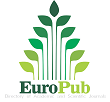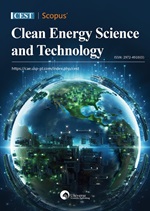Prevalence estimation of sarcopenia using bioelectrical impedance analysis in elderly people in Lahore
DOI:
https://doi.org/10.18686/fnc.v2i1.129Keywords:
sarcopenia; older adult; muscle mass; muscle strength, handgrip strengthAbstract
Sarcopenia is the loss of muscle mass and strength, or both, and physiological functions through aging. Early detection of muscle weakness results in better care and interventions regarding dietary habits and protein intake in older adults. The objective of this study was to investigate the prevalence of sarcopenia in a Pakistani population and to correlate dietary habits and lifestyle with the prevalence of sarcopenia. A sample size of 150 individuals, both male and female, of age sixty and above was used. Cardiovascular disease and renal failure patients were excluded. The research field was the community of Lahore. Muscle power was calculated using a handgrip strength dynamometer, and gait speed was calculated using a pedometer. After screening, muscle mass was calculated using bioelectrical impedance analysis, from which sarcopenia was diagnosed. In the age group of 60–65 years, 123 individuals (82%) had low muscle strength and 93 (83%) had low muscle mass. In the age group of 66–70 years, 15 individuals (83.3%) had low muscle strength. In the age group of 71–75 years, 9 individuals (90%) had low muscle strength. The percentage of low muscle strength in the age group of 76+ years was 100%. The percentage of severe sarcopenia was 6%, and moderate sarcopenia was approximately 10% for individuals 60 years of age and older. The prevalence rates of sarcopenia were 21.53% in males and 11.76% in females. Sarcopenia is an emerging health issue in older adults, and early detection and lifestyle modification will lead to a better health outcome and correlate dietary habits and lifestyle with the prevalence of sarcopenia.
Downloads
Published
How to Cite
Issue
Section
License
Copyright (c) 2024 Nayyab Rahat, Hafiz Muhammad Shahbaz, Amin Naser Olaimat, Zahra Khan, Muhammad Asif Ali, Abdul Rehman

This work is licensed under a Creative Commons Attribution 4.0 International License.
References
1. Cruz-Jentoft AJ, Baeyens JP, Bauer JM, et al. Sarcopenia: European consensus on definition and diagnosis. Age and Ageing. 2010; 39(4): 412-423. doi: 10.1093/ageing/afq034 DOI: https://doi.org/10.1093/ageing/afq034
2. Paddon-Jones D, Short KR, Campbell WW, et al. Role of dietary protein in the sarcopenia of aging. The American Journal of Clinical Nutrition. 2008; 87(5): 1562S-1566S. doi: 10.1093/ajcn/87.5.1562s DOI: https://doi.org/10.1093/ajcn/87.5.1562S
3. Barazzoni R, Cederholm T, Zanetti M, et al. Defining and diagnosing sarcopenia: Is the glass now half full? Metabolism. 2023; 143: 155558. doi: 10.1016/j.metabol.2023.155558 DOI: https://doi.org/10.1016/j.metabol.2023.155558
4. Bahat G, Aydin CO, Tufan A, et al. Muscle strength cutoff values calculated from the young reference population to evaluate sarcopenia in Turkish population. Aging Clinical and Experimental Research. 2021; 33(10): 2879-2882. doi: 10.1007/s40520-021-01785-3 DOI: https://doi.org/10.1007/s40520-021-01785-3
5. Beaudart C, Rizzoli R, Bruyère O, et al. Sarcopenia: burden and challenges for public health. Archives of Public Health. 2014; 72(1). doi: 10.1186/2049-3258-72-45 DOI: https://doi.org/10.1186/2049-3258-72-45
6. Chen LK, Liu LK, Woo J, et al. Sarcopenia in Asia: Consensus Report of the Asian Working Group for Sarcopenia. Journal of the American Medical Directors Association. 2014; 15(2): 95-101. doi: 10.1016/j.jamda.2013.11.025 DOI: https://doi.org/10.1016/j.jamda.2013.11.025
7. Janssen I, Heymsfield SB, Baumgartner RN, et al. Estimation of skeletal muscle mass by bioelectrical impedance analysis. Journal of Applied Physiology. 2000; 89(2): 465-471. doi: 10.1152/jappl.2000.89.2.465 DOI: https://doi.org/10.1152/jappl.2000.89.2.465
8. Beaudart C, Zaaria M, Pasleau F, et al. Health Outcomes of Sarcopenia: A Systematic Review and Meta-Analysis. Wright JM, ed. PLOS ONE. 2017; 12(1): e0169548. doi: 10.1371/journal.pone.0169548 DOI: https://doi.org/10.1371/journal.pone.0169548
9. Tagliafico AS, Bignotti B, Torri L, et al. Sarcopenia: how to measure, when and why. La Radiologia Medica. 2022; 127(3): 228-237. doi: 10.1007/s11547-022-01450-3 DOI: https://doi.org/10.1007/s11547-022-01450-3
10. Al Zarea BK. Knowledge, Attitude and Practice of Diabetic Retinopathy amongst the Diabetic Patients of AlJouf and Hail Province of Saudi Arabia. Journal of Clinical and Diagnostic Research. Published online 2016. doi: 10.7860/jcdr/2016/19568.7862 DOI: https://doi.org/10.7860/JCDR/2016/19568.7862
11. Wang H, Hai S, Cao L, et al. Estimation of prevalence of sarcopenia by using a new bioelectrical impedance analysis in Chinese community-dwelling elderly people. BMC Geriatrics. 2016; 16(1). doi: 10.1186/s12877-016-0386-z DOI: https://doi.org/10.1186/s12877-016-0386-z
12. Gonzalez MC, Heymsfield SB. Bioelectrical impedance analysis for diagnosing sarcopenia and cachexia: what are we really estimating? Journal of Cachexia, Sarcopenia and Muscle. 2017; 8(2): 187-189. doi: 10.1002/jcsm.12159 DOI: https://doi.org/10.1002/jcsm.12159
13. Kyle UG, Bosaeus I, De Lorenzo AD, et al. Bioelectrical impedance analysis—part II: utilization in clinical practice. Clinical Nutrition. 2004; 23(6): 1430-1453. doi: 10.1016/j.clnu.2004.09.012 DOI: https://doi.org/10.1016/j.clnu.2004.09.012
14. Ding Y, Chang L, Zhang H, et al. Predictive value of phase angle in sarcopenia in patients on maintenance hemodialysis. Nutrition. 2022; 94: 111527. doi: 10.1016/j.nut.2021.111527 DOI: https://doi.org/10.1016/j.nut.2021.111527
15. III LJM, Khosla S, Crowson CS, et al. Epidemiology of Sarcopenia. Journal of the American Geriatrics Society. 2000; 48(6): 625-630. doi: 10.1111/j.1532-5415.2000.tb04719.x DOI: https://doi.org/10.1111/j.1532-5415.2000.tb04719.x
16. Janssen I. Skeletal Muscle Cutpoints Associated with Elevated Physical Disability Risk in Older Men and Women. American Journal of Epidemiology. 2004; 159(4): 413-421. doi: 10.1093/aje/kwh058 DOI: https://doi.org/10.1093/aje/kwh058
17. Rizzoli R, Stevenson JC, Bauer JM, et al. The role of dietary protein and vitamin D in maintaining musculoskeletal health in postmenopausal women: A consensus statement from the European Society for Clinical and Economic Aspects of Osteoporosis and Osteoarthritis (ESCEO). Maturitas. 2014; 79(1): 122-132. doi: 10.1016/j.maturitas.2014.07.005 DOI: https://doi.org/10.1016/j.maturitas.2014.07.005
18. Robinson S, Cooper C, Sayer A. Nutrition and Sarcopenia: A Review of the Evidence and Implications for Preventive Strategies. Clinical Nutrition and Aging. Published online February 18, 2016: 3-18. doi: 10.1201/b19985-3 DOI: https://doi.org/10.1201/b19985-3
19. Hanach NI, McCullough F, Avery A. The Impact of Dairy Protein Intake on Muscle Mass, Muscle Strength, and Physical Performance in Middle-Aged to Older Adults with or without Existing Sarcopenia: A Systematic Review and Meta-Analysis. Advances in Nutrition. 2019; 10(1): 59-69. doi: 10.1093/advances/nmy065 DOI: https://doi.org/10.1093/advances/nmy065
20. Narici MV, Maffulli N. Sarcopenia: characteristics, mechanisms and functional significance. British Medical Bulletin. 2010; 95(1): 139-159. doi: 10.1093/bmb/ldq008 DOI: https://doi.org/10.1093/bmb/ldq008
21. Cesari M, Ferrini A, Zamboni V, et al. Sarcopenia: Current Clinical and Research Issues. The Open Geriatric Medicine Journal. 2008; 1(1): 14-23. doi: 10.2174/1874827900801010014 DOI: https://doi.org/10.2174/1874827900801010014
22. Montiel-Rojas D, Nilsson A, Santoro A, et al. Fighting Sarcopenia in Ageing European Adults: The Importance of the Amount and Source of Dietary Proteins. Nutrients. 2020; 12(12): 3601. doi: 10.3390/nu12123601 DOI: https://doi.org/10.3390/nu12123601
23. Cruz-Jentoft AJ, Landi F, Schneider SM, et al. Prevalence of and interventions for sarcopenia in ageing adults: A systematic review. Report of the International Sarcopenia Initiative (EWGSOP and IWGS). Age and Ageing. 2014; 43(6): 748-759. doi: 10.1093/ageing/afu115 DOI: https://doi.org/10.1093/ageing/afu115
24. Barbosa-Silva TG, Bielemann RM, Gonzalez MC, et al. Prevalence of sarcopenia among community-dwelling elderly of a medium-sized South American city: Results of the COMO VAI? study. Journal of Cachexia, Sarcopenia and Muscle. 2015; 7(2): 136-143. doi: 10.1002/jcsm.12049 DOI: https://doi.org/10.1002/jcsm.12049
25. Lau EMC, Lynn HSH, Woo JW, et al. Prevalence of and risk factors for sarcopenia in elderly Chinese men and women. The Journals of Gerontology Series A: Biological Sciences and Medical Sciences. 2005; 60(2): 213-216. doi: 10.1093/gerona/60.2.213 DOI: https://doi.org/10.1093/gerona/60.2.213
26. Huang L. Going global: Householding and the demographic transition in Taiwan. Philippine Studies. 2007; 55(2): 183-210. doi: 10.3316/informit.119598763529417
27. Robinson S, Granic A, Sayer AA. Micronutrients and sarcopenia: Current perspectives. Proceedings of the Nutrition Society. 2021; 80(3): 311-318. doi: 10.1017/s0029665121001956 DOI: https://doi.org/10.1017/S0029665121001956
28. Iannuzzi-Sucich M, Prestwood KM, Kenny AM. Prevalence of sarcopenia and predictors of skeletal muscle mass in healthy, older men and women. The Journals of Gerontology Series A: Biological Sciences and Medical Sciences. 2002; 57(12): M772-M777. doi: 10.1093/gerona/57.12.m772 DOI: https://doi.org/10.1093/gerona/57.12.M772
29. Bohannon RW. Dynamometer Measurements of Grip and Knee Extension Strength: Are They Indicative of Overall Limb and Trunk Muscle Strength? Perceptual and Motor Skills. 2009; 108(2): 339-342. doi: 10.2466/pms.108.2.339-342 DOI: https://doi.org/10.2466/pms.108.2.339-342
30. Diz JBM, Queiroz BZ de, Tavares LB, et al. Prevalência de sarcopenia em idosos: Resultados de estudos transversais amplos em diferentes países. Revista Brasileira de Geriatria e Gerontologia. 2015; 18(3): 665-678. doi: 10.1590/1809-9823.2015.14139 DOI: https://doi.org/10.1590/1809-9823.2015.14139
31. Villaseñor A, Ballard-Barbash R, Baumgartner K, et al. Prevalence and prognostic effect of sarcopenia in breast cancer survivors: the HEAL Study. Journal of Cancer Survivorship. 2012; 6(4): 398-406. doi: 10.1007/s11764-012-0234-x DOI: https://doi.org/10.1007/s11764-012-0234-x
32. Tan LF, Lim ZY, Choe R, et al. Screening for Frailty and Sarcopenia Among Older Persons in Medical Outpatient Clinics and its Associations With Healthcare Burden. Journal of the American Medical Directors Association. 2017; 18(7): 583-587. doi: 10.1016/j.jamda.2017.01.004 DOI: https://doi.org/10.1016/j.jamda.2017.01.004
33. Janssen I, Heymsfield SB, Ross R. Low Relative Skeletal Muscle Mass (Sarcopenia) in Older Persons Is Associated with Functional Impairment and Physical Disability. Journal of the American Geriatrics Society. 2002; 50(5): 889-896. doi: 10.1046/j.1532-5415.2002.50216.x DOI: https://doi.org/10.1046/j.1532-5415.2002.50216.x




.jpg)
.jpg)

